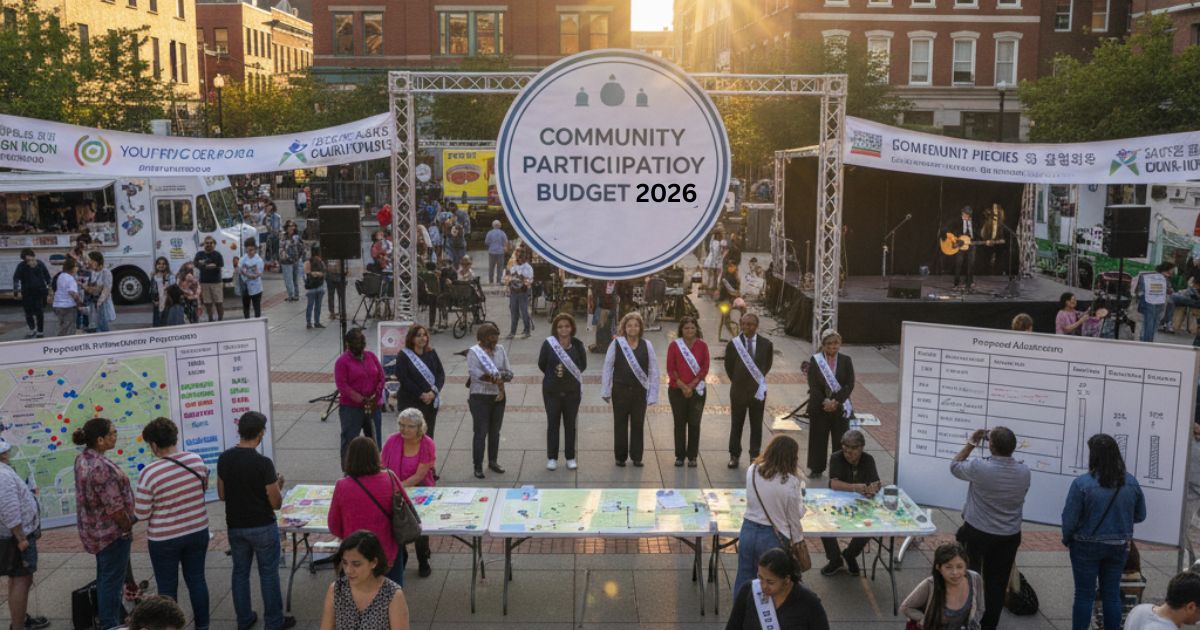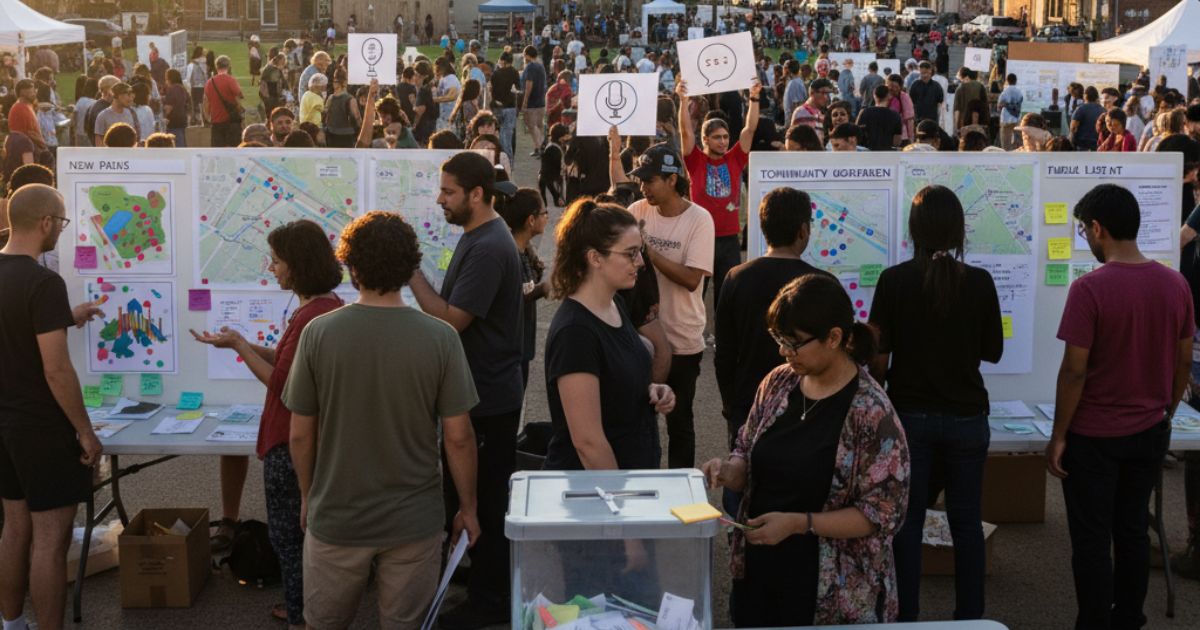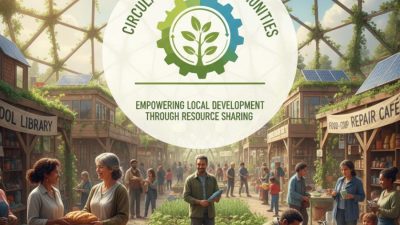Communities want a real voice in how public funds are used. Participatory budgeting makes this possible. It is a transparent process where residents help decide how part of a local government budget is spent. People can suggest ideas, discuss community needs, and vote on projects that improve their neighborhoods.
This community-driven budgeting model strengthens local democracy. It increases civic participation, builds trust in local government, and supports inclusive community development. When citizens are involved in budget decisions, public spending becomes more fair, effective, and people-centered.
In this guide, you will learn what participatory budgeting in local government means and how the process works step by step. We explain proposal planning, community voting, and project implementation in simple terms. You will also explore real-world participatory budgeting examples from cities like New York, Paris, and Porto Alegre.
We also highlight digital participatory budgeting tools that make public participation easier and more accessible. Finally, you will find practical tips to overcome common challenges and ensure long-term citizen engagement in community decision-making.
What Is Participatory Budgeting?
Participatory Budgeting (PB) is a democratic process where community members help decide how public money is spent. Local governments set aside a portion of their budget, and residents choose how to use it for community projects.
Through participatory budgeting, citizens can suggest ideas, discuss local needs, and vote on projects that improve public spaces, schools, roads, and services. This approach gives people a direct role in public spending decisions.
Participatory budgeting supports community engagement and local governance transparency. It helps ensure that budget decisions reflect real community priorities, not just top-down planning. By involving residents, PB builds trust, promotes fairness, and encourages inclusive decision-making in community development.
Key Benefits of Participatory Budgeting

Participatory budgeting plays a powerful role in community development and local governance. It creates a transparent, inclusive, and citizen-led budgeting system. Below are the main benefits explained in a simple and clear way.
Stronger Civic Engagement and Public Participation
Participatory budgeting increases civic engagement by giving residents a direct role in public decision-making. Instead of only observing government actions, citizens actively propose and vote on community projects. This sense of ownership strengthens community involvement and encourages long-term participation in local initiatives.
Transparency in Public Spending
One of the biggest benefits of participatory budgeting is budget transparency. The full budgeting cycle is open to the public, from idea submission to project implementation. This openness improves government accountability, reduces corruption risks, and builds public trust in local government processes.
Equitable and Inclusive Budget Allocation
Traditional budgeting often fails to address the needs of underserved areas. Participatory budgeting promotes equitable resource distribution by including voices from marginalized and low-income communities. This inclusive approach supports social equity and ensures that public funds reflect real community priorities.
Capacity Building and Civic Education
Participatory budgeting supports community capacity building. Through workshops and public meetings, residents learn skills such as financial literacy, project planning, and collaboration. These skills empower citizens and strengthen the foundation for future civic participation and grassroots leadership.
Improved Social Cohesion and Community Trust
Collaborative budgeting encourages dialogue between residents and officials. This shared decision-making process builds social cohesion and reduces divisions within neighborhoods. When people work together on local projects, they develop trust, cooperation, and a stronger sense of community identity.
By combining citizen participation, transparent budgeting, and inclusive governance, participatory budgeting creates stronger, more resilient communities and a healthier local democracy.
A Step-by-Step Framework for Implementation
Participatory budgeting follows a clear and repeatable process. While each city or community can adapt it to local needs, most participatory budgeting models include six core stages. This step-by-step framework supports transparent governance, inclusive participation, and effective community-led budgeting.
1. Planning and Program Design
The process starts with planning. Local governments define clear goals, total budget allocation, timelines, and voting rules. A steering committee is formed with local officials, community leaders, and civil society groups. This group ensures fair rules, strong governance structure, and alignment with public finance policies.
2. Community Outreach and Idea Collection
Strong community engagement is essential. Cities run awareness campaigns using social media, local events, flyers, and public meetings. Outreach is often multilingual to ensure inclusive participation. Residents share ideas through workshops, online forms, and neighborhood meetings based on real local needs.
3. Proposal Development and Review
In this stage, community ideas become real project proposals. Technical teams help residents refine ideas, estimate costs, and check feasibility. This step ensures proposals follow legal and financial guidelines. Clear templates support transparent budgeting and consistent project evaluation.
4. Voting and Public Deliberation
Final proposals are shared with the public. Residents vote using in-person booths or digital platforms to increase accessibility. Some models include discussion sessions where people talk about priorities and trade-offs. This strengthens participatory decision-making and informed voting.
5. Project Implementation
Projects with the most votes receive funding. Local departments or partner organizations manage delivery. Progress updates are shared through dashboards, newsletters, or public meetings. This stage reinforces government accountability and keeps the community informed.
6. Monitoring and Evaluation
The final stage focuses on results. Cities track project outcomes, spending efficiency, and community satisfaction. Surveys and public forums help gather feedback. These insights improve future participatory budgeting processes and support long-term community development.
By following this structured approach, participatory budgeting becomes a powerful tool for local democracy, citizen participation, and sustainable neighborhood improvement.
Addressing Common Challenges

Participatory budgeting delivers strong results, but it also comes with practical challenges. Planning ahead and using the right strategies can help communities build a sustainable participatory budgeting process and maintain public trust.
Limited Public Awareness
Many residents may not understand what participatory budgeting is or how it works. This can lead to low engagement. Clear and simple communication helps solve this issue. Cities should run awareness campaigns that explain the PB process, share real success stories, and highlight visible community impact.
Unequal Community Participation
Some groups, such as youth, low-income residents, or minority communities, may be underrepresented. To promote inclusive civic participation, local governments can partner with community organizations, schools, and faith-based groups. Trusted local voices help reach people who are often left out of public decision-making.
Technical and Budgeting Complexity
Community ideas may be creative but difficult to implement. This challenge can be reduced by offering proposal workshops, staff guidance, and easy-to-use budgeting tools. These supports help turn ideas into realistic projects and improve participatory decision-making quality.
Limited Resources and Capacity
Running participatory budgeting requires time, staff, and funding. To manage costs, cities can seek support from nonprofit organizations, private partners, or shared regional programs. This approach strengthens public sector innovation without overloading local budgets.
Managing Community Expectations
Not every idea can receive funding. Clear communication about budget limits, eligibility rules, and project feasibility is essential. Providing feedback on rejected proposals builds transparency and protects trust in the community budgeting process.
By addressing these challenges early, participatory budgeting programs can remain inclusive, transparent, and effective—supporting long-term local governance, citizen engagement, and equitable community development.
Case Study: New York City’s Participatory Budgeting Program
New York City runs one of the world’s largest participatory budgeting programs. The program began in 2011 and continues to empower residents across all five boroughs. Each year, the City Council sets aside about $35 million for community-led decision-making.
Strong Community Participation
More than 100,000 residents take part every year. People join public meetings, submit project ideas, and vote on final proposals. The city uses multilingual outreach, school programs, and pop-up events to boost civic engagement and reach diverse communities.
Collaborative Project Development
Residents do not work alone. City agencies and technical staff support idea development through workshops. This helps improve project feasibility, reduce budget risks, and speed up implementation.
Digital Transparency and Accountability
New York City uses online tools to keep the process open. Public dashboards show budgets, project locations, and voting results. These tools strengthen government transparency and public trust.
Real Community Impact
So far, participatory budgeting has funded over 1,700 local projects. These include school safety upgrades, park improvements, street repairs, and public art. The results support equitable community development and improve daily life for thousands of residents.
This case shows how participatory budgeting can scale successfully while keeping citizens at the center of local governance and public spending decisions.
Digital Tools to Streamline Participatory Budgeting
Digital tools make participatory budgeting easier, faster, and more inclusive. They help local governments manage the process and allow more residents to join from anywhere. These platforms support online civic engagement, improve transparency, and strengthen community participation.
Balancing Act
Balancing Act is an open-source budgeting and voting tool. Residents can submit project ideas, review spending options, and vote online. It supports multiple languages and shows results clearly, which helps with public budget transparency.
CitizenLab
CitizenLab is a flexible civic engagement platform. Cities use it to collect ideas, run surveys, and set priorities. It helps governments understand community needs and improve citizen participation through digital channels.
Consul
Consul is a free, open-source platform used by cities like Madrid and Barcelona. It supports participatory democracy features such as budgeting, citizen proposals, and public debates. It is ideal for managing large-scale PB programs.
Polis
Polis focuses on community dialogue and consensus building. It maps public opinion in real time and highlights shared views and disagreements. This helps communities discuss trade-offs before voting and supports better collective decision-making.
Using these digital tools helps cities run participatory budgeting programs that are more accessible, transparent, and effective.
Best Practices and Tips for Lasting Impact
To create a successful and sustainable participatory budgeting program, cities must go beyond one-time engagement. A strong focus on community participation, transparent budgeting, and inclusive governance helps ensure long-term value for both residents and local governments.
Embed Participatory Budgeting in Municipal Policy
Make participatory budgeting part of official local policy through council resolutions or ordinances. This secures annual budget allocation, staff responsibility, and political support. When PB is institutionalized, it becomes a core element of local democracy rather than a temporary project.
Promote Co-Creation with the Community
Invite residents to help design the process from the beginning. When people contribute to setting priorities, budget limits, and voting methods, they feel true ownership. This approach strengthens citizen-led planning and leads to more relevant community projects.
Use Multiple Participation Channels
Not everyone engages the same way. Combine town halls, neighborhood workshops, school events, paper ballots, and digital platforms. Offering both online and offline options ensures inclusive civic engagement, especially for seniors, youth, and underserved groups.
Share Clear and Regular Updates
Transparency builds trust. Share project timelines, funding status, and implementation progress through newsletters, social media, and public dashboards. Ongoing communication reinforces open government practices and keeps residents invested beyond voting.
Review Results and Improve Each Cycle
After each budgeting round, gather feedback through surveys and public meetings. Analyze participation data, project outcomes, and community satisfaction. Using these insights to refine future cycles supports evidence-based policymaking and continuous improvement.
By following these best practices, participatory budgeting programs can deliver lasting social impact, strengthen public trust, and empower communities to shape their own development.
Conclusion
Participatory Budgeting (PB) is a powerful tool for democratic renewal and community development. It allows residents to co-create and decide on local projects that truly reflect their needs and priorities. By giving people an authentic voice, PB strengthens civic engagement, promotes transparency, and ensures that public funds are used wisely.
Whether you work in a small town, a large city, a school district, or a nonprofit organization, adopting PB can help build trust, increase collaboration, and empower local communities. Begin by establishing a clear framework, investing in community outreach, and utilising digital platforms to facilitate participation.
When PB becomes part of your governance system, it creates lasting change. Over time, you will see a more informed, connected, and active community—one where every budget decision contributes to shaping a better future for everyone.
FAQs
How does participatory budgeting work in local government?
Participatory budgeting works through a step-by-step process. Local governments set aside part of the public budget. Residents submit ideas, develop proposals, and vote on projects. The winning projects receive funding and are implemented by the city or partners.
What types of projects are funded through participatory budgeting?
Participatory budgeting funds community-focused projects. These include park improvements, road repairs, school upgrades, public safety initiatives, and local infrastructure. Projects must benefit the public and align with local government rules.
Who can participate in participatory budgeting programs?
Most participatory budgeting programs allow all residents to participate. This often includes youth, seniors, immigrants, and people without voting rights in elections. The goal is inclusive civic engagement and equal community representation.
Why is participatory budgeting important for community development?
Participatory budgeting supports community development by involving residents in spending decisions. It improves transparency, builds trust in local government, and ensures fair resource distribution. Communities become more connected and empowered.
Can participatory budgeting be done online?
Yes, participatory budgeting can be done online. Many cities use digital platforms for idea collection and voting. Online participatory budgeting increases accessibility and allows more people to join the decision-making process.





